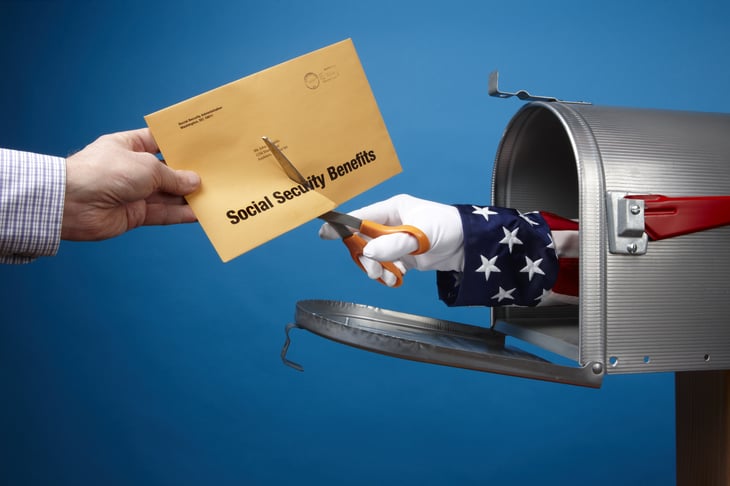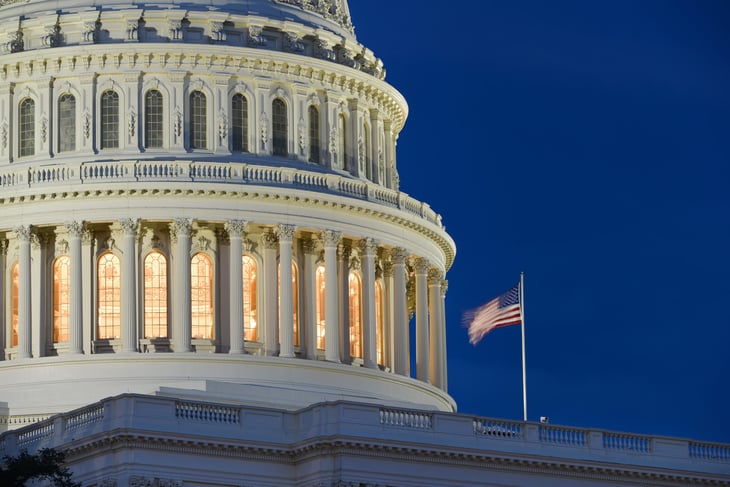
FabrikaSimf / Shutterstock.com
Established in 1935, the Social Safety system for retirement advantages is a important basis for the lives of American retirees. For most individuals over 65, this old-age provision is definitely indispensable.
About half of Individuals over the age of 65 stay in households that depend on Social Safety advantages for half or extra of their revenue, the Social Safety Administration says. In 1 / 4 of those households, Social Safety checks make up nearly all of their revenue.
Since its inception, Social Safety has skilled common financial crises, and Congress has at all times resolved them with changes. At the moment, Social Safety is approaching one other financial cliff for these and different causes:
- The retirement of the massive child boomer technology
- Longer lifetime
- Decrease delivery charges
- Rising revenue inequality
Here is a fast take a look at the difficulty and whether or not Social Safety can go broke this time round.
How Social Safety is funded
 Trekandshoot / Shutterstock.com
Trekandshoot / Shutterstock.com
Your Social Safety retirement test is funded by payroll taxes on Individuals’ earnings throughout their working lives and taxes on some Social Safety retirement revenue.
Employers and workers will every contribute 6.2% of wages to the fund in 2022 (as much as a cap of $147,000). The self-employed pay the total 12.4%. Additionally, 40% of Social Safety recipients pay revenue tax on their advantages, cash that goes again into the Social Safety belief fund.
Here is a breakdown of Social Safety income streams in 2021:
- revenue tax: $980.06 billion (90.1%)
- curiosity revenue: $70.1 billion in curiosity on invested funds (6.4%)
- Revenue from the tax on donations: $37.6 billion (3.4%)
Advantages paid out now exceed monies acquired, and the $2.9 trillion Social Safety belief fund has begun to shrink to cowl profit checks.
Social safety is not going to run out anytime quickly
 Lane V. Erickson / Shutterstock.com
Lane V. Erickson / Shutterstock.com
If nothing is completed, in response to present estimates, the Social Safety Belief Fund shall be utterly depleted by 2034.
That does not imply the loss of life of Social Safety, nonetheless. Advantages wouldn’t cease – the system would proceed to operate and payroll taxes would proceed to fund advantages.
The funds may ultimately be decreased
 Jim Barber / Shutterstock.com
Jim Barber / Shutterstock.com
After 2034, annual Social Safety revenue would nonetheless be sufficient to pay about three-quarters of the advantages for the subsequent technology of retirees. Even in 2096, Social Safety income may cowl 74% of its prices.
Nothing have to be misplaced when Congress acts
 Orhan Cam / Shutterstock.com
Orhan Cam / Shutterstock.com
Modifications will nearly definitely be wanted for Social Safety to proceed in its present type, says Stacy Johnson, founding father of Cash Talks Information,
However the issue is not at all insoluble. The legislature has many potentialities to react to the altering instances. Some strategies from AARP are:
- Improve within the revenue tax price
- Elevating the taxable revenue cap above the present $147,000 to faucet into extra of the revenue of rich taxpayers
- Contain state and native officers within the tax base broadening system
- Gradual enhance within the age at which beneficiaries are entitled to advantages
Historical past supplies quite a few examples of motion by Congress to keep up this system, together with 1950, 1954, 1956, 1961, 1972, and 1977.
Probably the most essential corrections was initiated by President Ronald Reagan within the early Eighties. When this system confronted a funding disaster, he initiated a research referred to as the Greenspan Commission and urged Congress to behave.
In 1983, the ensuing legislation strengthened Social Safety for a protracted time, together with taxing advantages and elevating the retirement age.